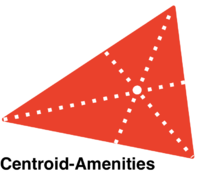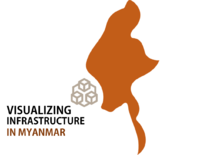Difference between revisions of "Project Groups"
Khching.2014 (talk | contribs) |
(Added logo for HawkerLeh) |
||
| Line 203: | Line 203: | ||
|- | |- | ||
| − | | | + | |[[File:HawkerLeh.png|200px|center|HawkerLehLogo]] |
|| | || | ||
TBC | TBC | ||
Revision as of 18:07, 13 February 2018
|
|
|
|
|
|
Please kindly sign-up by week 5.
Click on your team name in the team column to update your team wiki page. Have fun!
Project Groups
Please change Your Team name to your project topic and change student name to your own name
| Team Name | Project Title | Project Description | Project Artifacts | Members | Sponsor or potential users |

|
Singapore Risk Elements |
Risk and hazard are terms commonly used to describe aspects of the potential for harm caused by environmental factors and other agents. Since 2014, Singapore has been striving to achieve the vision of being a smart nation. The most integral step in this direction is the analysis and assessment of risk, for it is only by doing so that we can build a healthy, safe and prepared smart nation. After all the steps taken by the Singaporean government and society to be more risk-free, it is important to understand our vulnerability - in terms of dominant contributing factors, location and key institutions that could potentially be affected by these risks. "Risk" is an umbrella term that could cover a number of topics and factors. It could even span industries. Therefore for the purpose of this study, we will define the boundaries of our risk assessment according to 4 agents of risk, namely Biological(biohazards), Technological(explosives), Natural or hydrological(floods), and Societal(epidemics). |
MALLIKA GOKARN, MARK NG WEI JIE, FAN KAIYANG |
||
|
Singapore Traffic Accidents Analysis |
Singapore’s Intelligent Transport System (ITS) aims to make Singapore’s transport system more efficient and safe. However, traffic accidents are inevitable in any country and Singapore is no exception. Traffic accidents often result in fatalities, injuries and damages to public properties. In this project, we aim to analyse the spatial patterns of road accidents in Singapore and evaluate the effectiveness of traffic measures implemented by Land Transport Authority (LTA) to reduce traffic accidents. Through the findings that we have discovered, we hope to provide useful recommendations to LTA to further reduce traffic accidents in Singapore. |
|
|||
| Group 10 |
Work in Progress |
|
|||
 |
|
Looking forward to trying out a new jacket that you bought online but you did not make it back home in time to collect the delivery? Want to arrange for another delivery date and time but always being put on hold waiting for the customer service to answer? These are some examples of the typical hassles that e-commerce consumers face when faced with missed deliveries. Missing deliveries is something that neither customers or logistics providers would want to face, for it leads to inconveniences that are often unnecessary and time-consuming. After all, the last thing that a customer wants to do is to make a long trip down to either the post office or the warehouse just to collect their parcels. Our project solution would be the development of an application that will provide e-commerce customers with a more seamless experience in collecting their missed delivery parcels. We aim to utilise Geospatial Analytics to bridge the service gaps faced by both customers and logistics providers in the event of a missed delivery, through redirecting them to a third-party collection point that is situated in the proximity of the customer's home. In doing so, we believe that this is a more cost-effective method for logistics providers as well as it being a more efficient way for customers to pick up their missed parcels. |
|
||

|
Centroid-Amenities |
By 2030, Singapore’s Department of Statistics purports that nearly 1 in 3 Singaporeans will be over the age of 65, and will be in need of some form of eldercare. In the face on the oncoming ‘Silver Tsunami’, it is important that we rethink the placement and accessibility of our gerontological and palliative facilities, so Singaporeans can have access to the care that they need. Many existing eldercare facilities are located in the fringes of new town suburbs, and often near regional hospitals which are often further and less accessible from residential areas where the elderly would be. Our project posits that future eldercare facilities would be better positioned within the heartlands, to better serve an aging community. In this, we hope to equip town planners and eldercare facility administrators with the tools decide where best to place eldercare facilities. |
|
||
|
|
Comparing proximity and concentration of fast food to obesity in schools |
Spatial Point Patterns Analysis Diabetes - A BIG problem in Singapore. According to the 2015 report by the international diabetes foundation, Singapore has the second highest proportion of diabetics among developed nations. The root of many illness, such as diabetes, is obesity. Prolonged unhealthy eating habits are the reason for obesity and many other diseases. Our team believes healthy eating habits should be cultivated from young. Our project will look into proximity and concentration of fast food to primary and secondary school. Mapping the schools to these fast food, we can study whether there is a relationship between obesity in students and the presence of fast food nearby schools. |
|
||

|
Identify the most optimal collection points |
Jelivery Service(JS) Pte Ltd is a start-up that target at working population to bring them convenience with their laundry. JS helps to collect the customers dirty laundry to wash, dry, fold and return the clean laundry back to customers. However, JS needed a solution to bring greatest convenience to the customers and minimizing operation cost while being efficient. Therefore, Maptimization is here to help analyse and recommend JS of the best spot for laundry collection and return points. This helps to bring efficiency and lower operation cost for JS. Furthermore, maximizing satisfaction from customer by providing greatest convenience. |
|
||

|
Building a successful Jurong Lake District |
Ever since the announcement was made by the Urban Redevelopment Authority (URA) in the Draft Master Plan 2008 Review, the development of Jurong Lake District as Singapore’s second Central Business District (CBD) has been ongoing. In order to ensure that Jurong Lake District achieves the same level of vibrancy, synergy and success as the CBD located in Raffles Place, we will have to study and evaluate the factors that contributed to the first CBD’s success. Our web application that aims to analyse the contributing factors to the CBD’s success and apply them to the context of Singapore’s second CBD - Jurong Lake District. We will do so by identifying the makeup of professional services located within the CBD, its prominent landmarks and analyze how these factors contribute to the CBD’s success. |
|
||
|
TBC |
Hawker centres are a unique aspect of Singaporean culture, where people from all walks of life are able to enjoy local food. Besides offering delicacies from different cultures and having a clean and hygienic environment for the comfort of everyone, it is important for hawker centres to be situated at accessible locations. Furthermore, with the ageing population in Singapore, ensuring that hawker centres are accessible (i.e. is within walkable distance and is connected to public transport) is even more beneficial to them. With NEA being the main regulator our hawker centres, they have announced plans to build 20 new hawker centres in Singapore. With this in mind, we thought about how we could provide value to their planning through analysis and evaluations of current and future developments. |
|
|||
|
Currently, there is a need to upgrade the living conditions in different parts of Myanmar. However, it is difficult to pinpoint the locations of those areas that are in need of utility or basic infrastructure since the spatial points are all scattered. Our project aims to gather the population census data in Myanmar and map out the social demographic profile of the people such that areas that lack utilities and infrastructure can be easily identified. |
|
| Team | Members | |||||||||||||||||
|---|---|---|---|---|---|---|---|---|---|---|---|---|---|---|---|---|---|---|
| Your Team name | Student name | Student name | Student name | Student name | Student name | Student name | ||||||||||||
| Your Team name | Student name | Student name | Student name | Student name | Student name | Student name | ||||||||||||
| Group 6 | Jasmine Tan | Jesper Lim | Marcus Tan | Student name | Student name | Student name | ||||||||||||
| Your Team name | Student name | Student name | Student name | Student name | Student name | Student name | ||||||||||||
| Group 10 | Lee Jing Hua Amelia | Nicole Goh | Adeline Chin | Student name | Student name | Student name | ||||||||||||
| Your Team name | Student name | Student name | Student name | Student name | Student name | Student name | ||||||||||||






